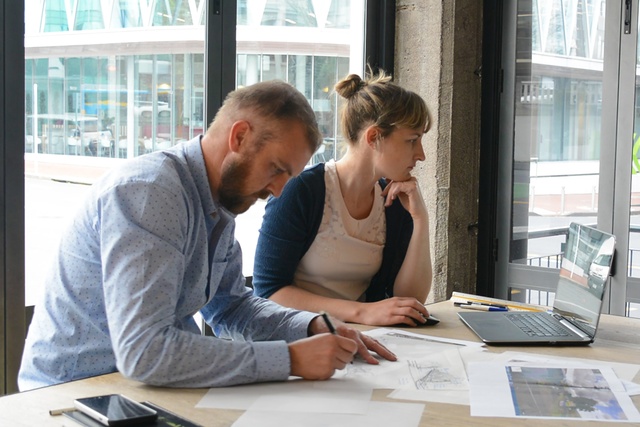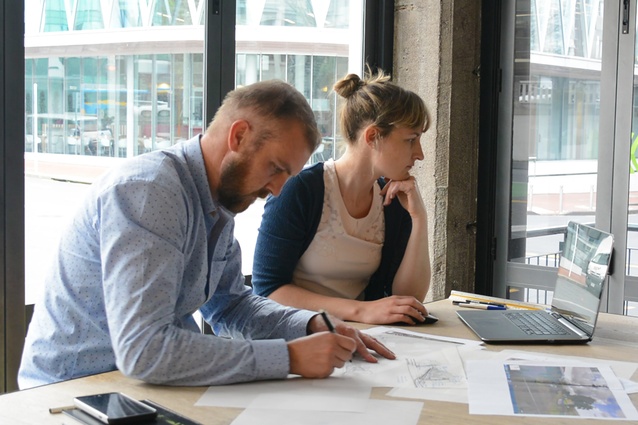Looking ahead: skills for the future
Adam Taylor, director at Ignite Architects, addresses the skills shortage in architecture in New Zealand. Here, he discusses what firms can do to attract new talent, retain current talent, and equip both with strong skills.

New developments and renovations in both the commercial and residential sectors are continuing at pace across the country. As architecture firms struggle to keep up with the demand for our skills, we’re faced with a dilemma: how can we keep projects flowing seamlessly for our clients, while still ensuring we stay on top of new technology and protect our industry for the future?
While outsourcing is an option, we need to be working more closely with education providers to attract more people into the industry, and then providing the mentoring and development opportunities that will help ensure everyone has the skills they need to face the coming technological disruption.
While speaking at a Hays seminar on ‘Careers in Architecture’ recently, I was struck by the similarities between the recruitment and development challenges we’ve been grappling with at Ignite, and the experiences of the other firms on the panel.
The whole industry is facing huge workloads, and with the shortage of highly skilled staff, the temptation is to outsource tasks such as documentation and rendering overseas. However, I believe we need to do more to address the skills gaps at home. I think we can do better at both recruiting and retaining skilled staff by focusing on just a few core areas.
Firstly, I believe that as an industry we need to be working more closely with education providers to make sure graduates have all the right skills to meet the industry’s needs, whether this is software knowledge or an understanding of the construction process from the ground up.
At Ignite, we support the Keystone Trust, an organisation that helps students who couldn’t otherwise afford to study towards a property-related degree. However, I think our input should start earlier than this if we want to ensure a steady stream of talent coming into architecture, and one that’s as diverse as possible.

The New Zealand Police have recently partnered with Rotorua secondary schools to offer NCEA courses in policing, hoping to break down longstanding perceptions around policing as a career, and attract students into law enforcement. While subjects like graphics are already available in schools, our industry could arguably be more proactive in encouraging secondary students into architecture.
Secondly, we need our recruitment and workplaces to be more reflective of the diversity that exists in New Zealand’s society. Traditionally, architecture has been perceived as an industry dominated by males. While this is now changing – 45 per cent of Ignite’s new hires in the past 12 months were female – it’s important that we ensure our workplace practices are attractive to the widest field possible if we want people to choose architecture as a career.
Examples from our own practice are creating flexible working policies that give employees flexibility around their working week; investing in technologies that allow remote working and progressive parental leave options.
Actively supporting our teams to fast-track their careers will also help our industry to grow its talent as quickly as possible. At Ignite, we have a training programme to support graduates in gaining their registration and getting on the fast-track with their careers. If we want to keep our teams engaged, it’s vital that we provide them with the opportunity to grow their skills on the job. It’s not enough to take on new staff, only to give them nothing but the most mundane, unskilled tasks until they have ‘paid their dues’.

This point is relevant at all levels within our industry. Even for more experienced staff, workplace mentoring is the best way to ensure everyone is upskilling, whether that be in new technologies or the latest design trends. It can be difficult to find time around work and family commitments to upskill, so learning while we work is the best option. No matter how busy we are, we need to make time to learn new technologies. Change is only getting faster, and ultimately, we’ll find ourselves left behind if we don’t learn the digital skills that will be industry-standard very soon.
It’s great to be riding the wave, but if we want to attract and retain talent in our industry, as well as a steady flow of work in future, we need to take a moment to assess where we’re going.
Working with both secondary and tertiary education providers to highlight the opportunities that exist within architecture will help with attracting talent, while looking at how our businesses operate and providing more opportunities for career development and flexibility within the workplace will help retain the talent we have. If we can work together as an industry to achieve this, we’ll be able to continue building on our reputation for quality design in New Zealand for decades to come.











